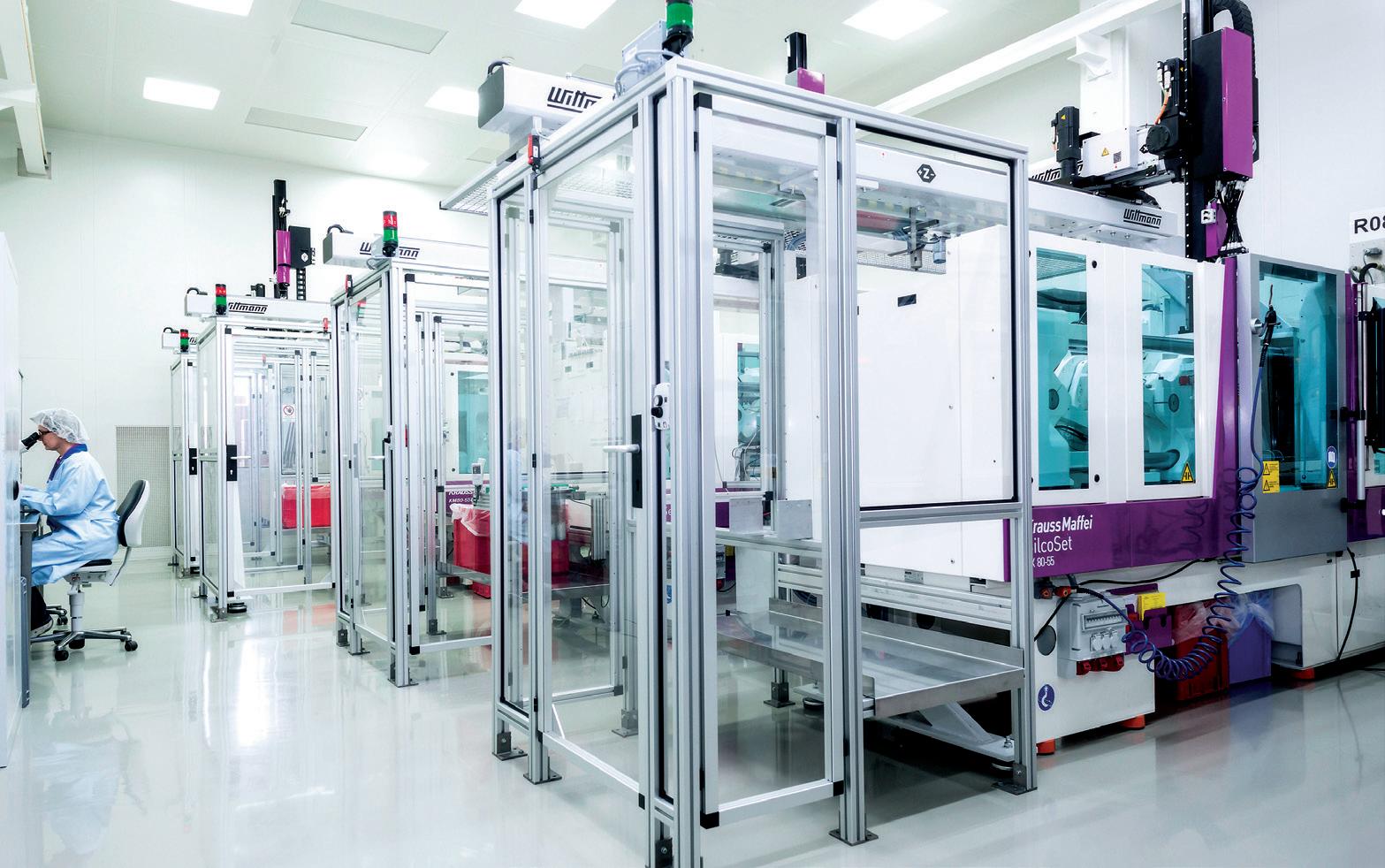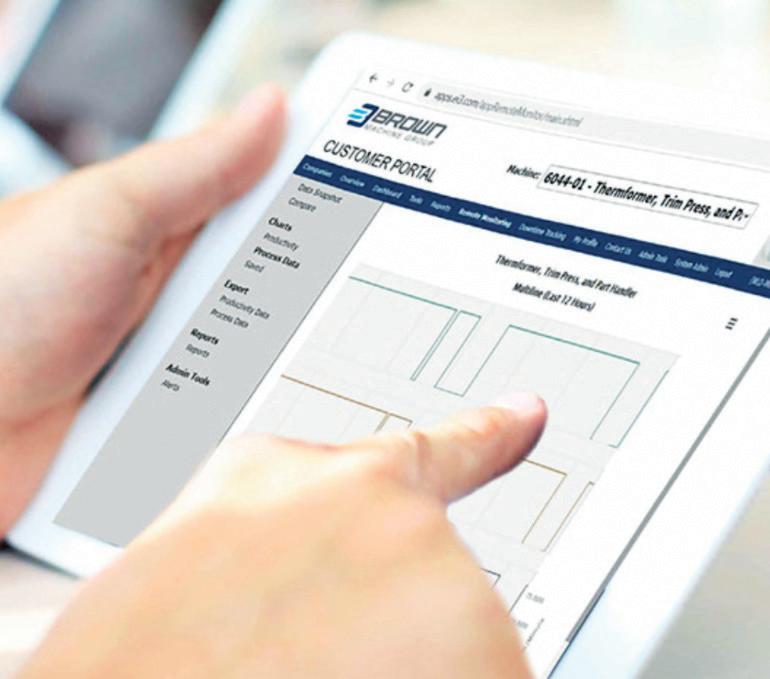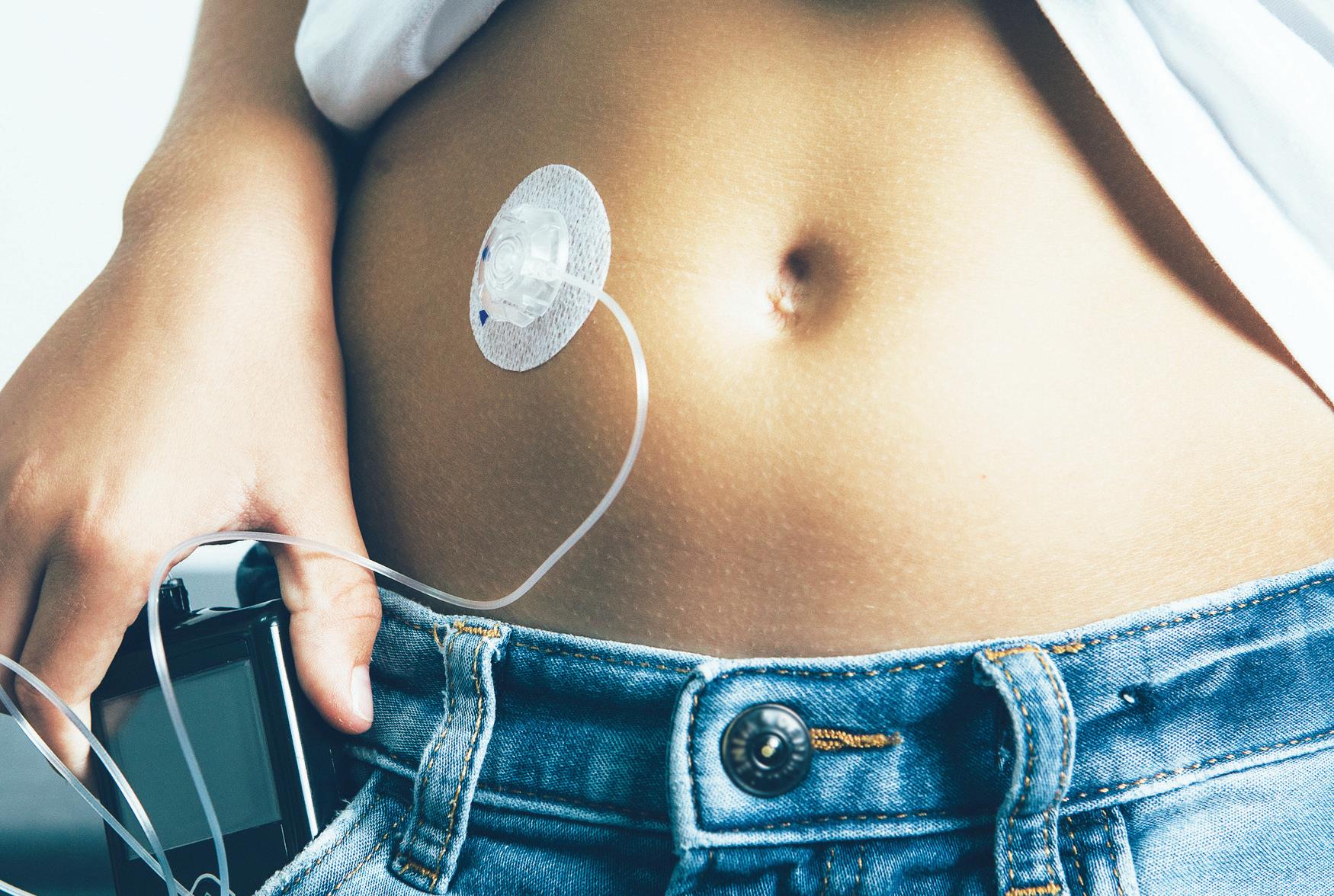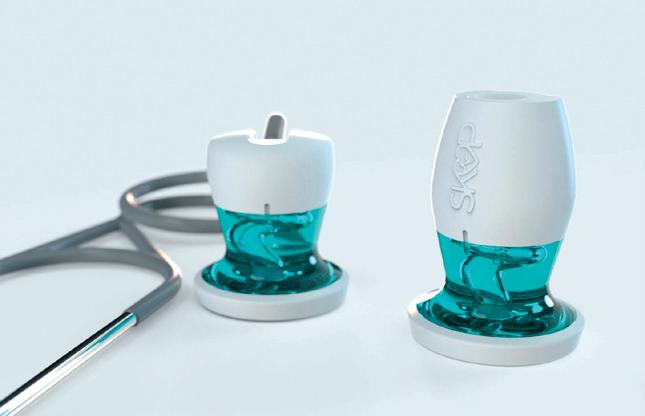
5 minute read
Joining technologies: Just what the doctor ordered?
from MPN NA Issue 18
by MPN Magazine

URSULA NOLLENBERGER, GLOBAL PRODUCT LINE DIRECTOR, HEALTHCARE & MEDICAL AND LIQUID SILICONE RUBBER COMPONENTS, TRELLEBORG SEALING SOLUTIONS SUGGESTS LIQUID SILICONE RUBBER MAY BE THE CURE FOR CURRENT MEDICAL DEVICE ENGINEERING AILMENTS.
Just what the doctor ordered?
Today’s medical device designers and manufacturers operate in a challenging landscape. Stricter regulations and the need for biocompatibility are making development and manufacturing more demanding. Add to that, user requirements for devices that suit their lifestyle choices, such as wearable products and home monitoring solutions, and you can understand why engineers are looking for novel component options.
THE CURE One solution is liquid silicone rubber (LSR) molding and multicomponent manufacturing. LSR is a stable and adaptable material that’s accelerating innovations in medical device design, facilitating to make devices more robust, efficient, and adaptable to patients’ needs. Silicone is ideal for medical devices and equipment, not only because it’s inert, biostable and biocompatible, but also because it can be processed in many ways (Figure 1). It can be molded on its own, but the real magic happens when it is combined during the molding process with engineered plastics and other substrates in what is termed ‘multicomponent manufacturing’.
This technology produces a single component, instead of separate parts that require assembly, and offers the medical device manufacturer several advantages. It reduces production costs and supply chain expenses associated with stocking and handling multiple parts. The single, integrated device has greater integrity and, for example, allows the elimination of undesirable spaces for bacteria growth, increasing patient safety.
For new multicomponent LSR applications, it is important to involve the component manufacturer as early as possible in the development process, ideally from the concept stage. Some molders, including Trelleborg, take a black box approach in which the designer specifies the component’s function, performance, and regulatory requirements, along with the available design window. The molder then develops a proposal that includes the benefits of LSR processing.
Figure 1: Multicomponent example of selfbonding LSR with polycarbonate that combines a flexible relief area with a rigid backbone in one piece, reducing assembly and performance risk in the final device. MINIATURIZATION The LSR molding process is well-suited for miniature parts. It can produce micro- and nano-sized components below 10 mg through specialized micro and needle-point injection technology. An example of a small piece manufactured is a septum — the membrane in the cap of a medicine bottle through which a syringe is inserted and withdrawn. This typically weighs just 0.003 g. At that size, you can hardly pick the part up … and standard molding burrs are larger than the part itself.
Manufacturing a microcomponent such as this requires extreme accuracy in tool construction, control of shot weight and the molding process. After molding, automatic handling of the product is performed by a specially developed robot gripper arm. The process ensures reliability and accuracy for millions of shots.
AUTOMATION AND QUALITY The example of the septum highlights the importance of automation for medical device component manufacturing; it makes the high-volume production of extremely complex multicomponent LSR geometries possible. Automation can also help ensure cleanliness requirements are met by reducing the risk of contamination during the production process Quality is paramount for medical devices. The ‘holy grail’ here is to ensure quality in process rather than to conduct post-production quality checks; thus, certified quality systems and process controls are built into the production process.

Figure 2: In an ISO Class 7 cleanroom, only 352,000 particles of 0.5 μm or larger are permitted per m³ of space.
The ability to segregate suspect products effectively with minimal disruption is crucial to minimizing downtime in a high-volume, rapid production process. Ideally, in-line quality checks should be electronically recorded to allow full traceability. Any issue can therefore be isolated to just a small number of components and separated by a cavity.
CLEANLINESS Though standards vary, cleanliness in medical device manufacturing is always vital. For some medical devices, production in an ‘uncontrolled environment’ is clean enough. Due to the nature and positioning of LSR moldings within a medical device, however, they may need to be manufactured and packed in a fully ‘controlled’ cleanroom of class 100,000, ISO 8 or class 10,000, ISO 7, or even higher.
Although they’re not generally a sterile environment, cleanrooms control a specified number of particles per cubic meter, at a maximum specified particle size. This includes environmental pollutants, such as dust, airborne microbes, aerosol particles and chemical vapors.
The ambient air in a typical urban environment contains 35 million particles per cubic meter of a diameter of 0.5 μm or larger. By comparison, in an operating ISO Class 7 cleanroom, only 352,000 particles of size 0.5 μm and larger are permissible per cubic meter of space (Figure 2). Current applications for LSR technologies range from drug delivery, such as primary drug packaging or wearable smart drug pump systems, to fluid management, diagnostics, short- and long-term implantable medical devices, and biotechnology. With so many advantages, it’s no surprise that LSR technology is seeing exponential growth.
CASE STORY: Patient benefits
When a customer’s medical valve was leaking and generating too much friction, a multicomponent LSR solution was the answer.
The control valve was made up of three separate parts — a piston sealed with two silicone O-Rings. Finite Element Analysis (FEA) simulations found that the plastic piston was misaligned, causing the leak. High friction between mating surfaces and assembled O-Rings was a second concern.
A new valve was developed using multicomponent technology, consisting of a single component with a compressive inner seal that was pressurized on both sides. It also had a deflective outer seal to reduce friction, creating a pressure-energized seal. The new design was subjected to FEA simulations and a Design for Manufacturing (DfM) analysis, including material flow simulation, to ensure manufacturing feasibility and to prove the intended tool concept.
The new LSR part was a reliable solution to leakage and friction issues. The integration of three individual components into one, streamlined the manufacturer’s supply chain and production process, increasing the company’s product quality and reliability, while also reducing production risk and overall costs.









